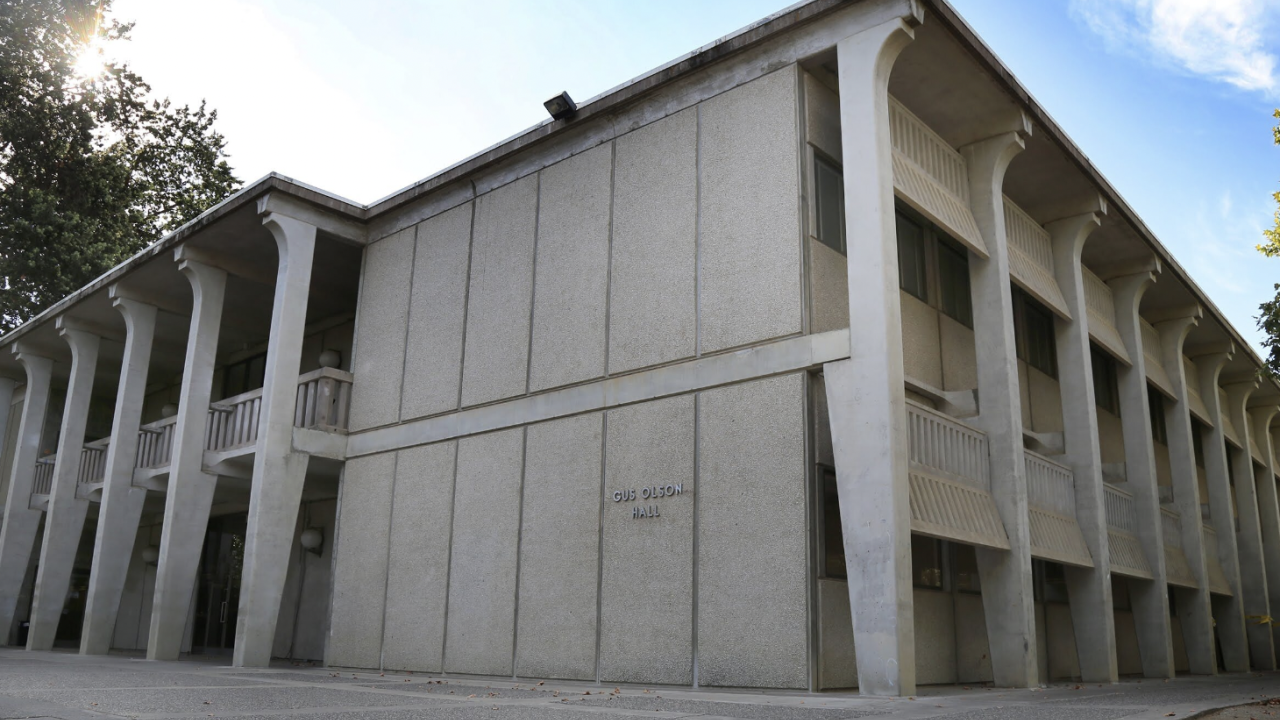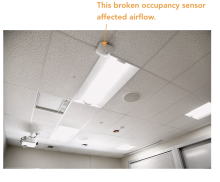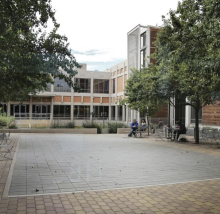
How Do Occupancy Sensors Affect Airflow?
One way to be energy efficient is to only heat and cool a building when it's occupied. Occupancy sensors detect motion in the room and turn on the HVAC or lighting system when there is motion.
Intro
As many students know, Olson Hall is a classroom building. In August, a professor in Room 101 reported that the room temperature had become too warm and uncomfortable.
"The thermostat was set at 78 F. As the class went on the temp rose to 82! Please set the thermostat at 74 F."
Resolution
Thanks to this comment, we discovered the occupancy sensor was broken, which meant there was no signal to the HVAC system to increase airflow when the classroom filled with people. We remotely changed the set point to 74 F in the HVAC controls system, while a Facilities HVAC technician fixed the occupancy sensor for a more permanent solution.

When there is no motion in a room, HVAC and lighting systems are turned off to conserve energy usage. Classroom schedules fluctuate the most throughout the school year and utilizing occupancy sensors is an effective way to determine HVAC and lighting needs.
Related Articles

How TherMOOstat Helps With Cooling Controls
We receive consistently cold votes from King and Ghausi Hall. This told us there may be an issue with the cooling controls in these buildings. Read about our investigations and how we used your feedback to increase the comfort levels of these buildings.
